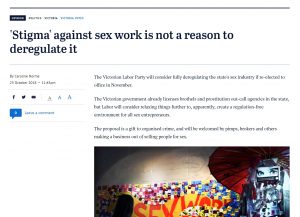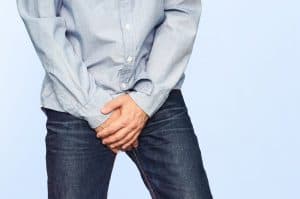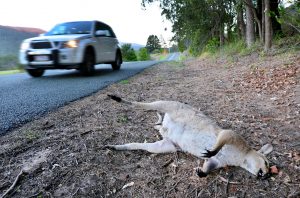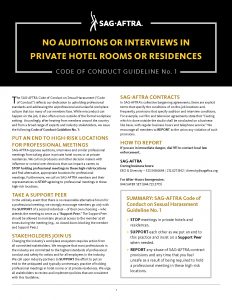 In 2017 the Victorian Government reviewed and revised its
In 2017 the Victorian Government reviewed and revised its
Category: sex
A narrow view on sex work safety
 Dr Caroline Norma had an opinion piece published in The Age newspaper on October 24 2018 that fails to acknowledge the occupational health and safety (OHS) duties of Victorian businesses operating sexual services. SafetyAtWorkBlog has looked closely at OHS in this industry sector before and has previously communicated with Dr Norma on sex work safety. Dr Norma’s current article illustrates a common perspective on workplace safety and health issues where one set of legislation dominates the public policy conversation rather than the multidisciplinary approach.
Dr Caroline Norma had an opinion piece published in The Age newspaper on October 24 2018 that fails to acknowledge the occupational health and safety (OHS) duties of Victorian businesses operating sexual services. SafetyAtWorkBlog has looked closely at OHS in this industry sector before and has previously communicated with Dr Norma on sex work safety. Dr Norma’s current article illustrates a common perspective on workplace safety and health issues where one set of legislation dominates the public policy conversation rather than the multidisciplinary approach.
It is necessary to clarify Dr Norma’s opening statement:
“The Victorian Labor Party will consider fully deregulating the state’s sex industry if re-elected to office in November.”
According to the 2018 Platform of the Victorian Australian Labor Party (ALP), in the context of Human Rights and Equal Opportunity, the ALP will:
“recommend that the Victorian Law Reform Commission consider decriminalisation of all sex work in Victoria as per other systems recognised internationally by human rights organisations.” (page 87)
Could your company manage an embarrassing workplace injury?
 Every man is aware of his penis and scrotum from a very early age. Male genitals do not feature often in discussions about occupational health and safety (OHS) but there was a workplace incident in the United States around 1970 that gained considerable attention but not really from the OHS perspective. I have always thought this incident would be a useful case study for discussing how this scenario would be managed today.
Every man is aware of his penis and scrotum from a very early age. Male genitals do not feature often in discussions about occupational health and safety (OHS) but there was a workplace incident in the United States around 1970 that gained considerable attention but not really from the OHS perspective. I have always thought this incident would be a useful case study for discussing how this scenario would be managed today.
In 1991 the journal “Medical Aspects of Human Sexuality” Dr William A Morton Jr. wrote of an unusual medical case. Basic a worker ripped open his scrotum while using a conveyor belt to masturbate. He was so embarrassed about the incident, he stapled his scrotum back together and told no one of the incident. I encourage readers to go to the full article at Snopes.com (some may find the details confronting), where Snopes verified the truth of the story, but the industrial crux of the incident is: Continue reading “Could your company manage an embarrassing workplace injury?”
New inquiry into sexual harassment – an OHS opportunity and challenge
 On June 20 2018, the Australian government announced a National Inquiry into Sexual Harassment in the Workplace, claiming it to be a world-first. Sexual harassment is not an occupational health and safety (OHS) hazard in many ways BUT the psychological harm it can create is. The job of an OHS person is to encourage employers to reduce work-related harm through prevention, so we need to prevent sexual harassment, just as we do for all the work activities that contribute to poor psychological health and safety.
On June 20 2018, the Australian government announced a National Inquiry into Sexual Harassment in the Workplace, claiming it to be a world-first. Sexual harassment is not an occupational health and safety (OHS) hazard in many ways BUT the psychological harm it can create is. The job of an OHS person is to encourage employers to reduce work-related harm through prevention, so we need to prevent sexual harassment, just as we do for all the work activities that contribute to poor psychological health and safety.
The macroeconomic costs of sexual harassment in the workplace may be of interest to politicians and business lobbyists but this can be a significant distraction from identifying ways to prevent psychological harm, which should be the most important legacy of this type of inquiry.
Addressing the OHS impacts of
Danger Money has been internalised
 Late last century I worked in the Victorian Department of Labour as an administrative officer, at a time when award restructuring and “structural efficiency principles” were in full swing. The existing awards often included a swathe of special allowances for activities like working at heights or picking up roadkill. These allowances were commonly called “dirt money” or “danger money” and were largely eliminated or incorporated in the base rates of pay through the restructuring of awards.
Late last century I worked in the Victorian Department of Labour as an administrative officer, at a time when award restructuring and “structural efficiency principles” were in full swing. The existing awards often included a swathe of special allowances for activities like working at heights or picking up roadkill. These allowances were commonly called “dirt money” or “danger money” and were largely eliminated or incorporated in the base rates of pay through the restructuring of awards.
The concept of “danger money” has disappeared from the formal industrial relations (IR) processes in Australia but is an important one to remember in the context of occupational health and safety (OHS), particularly as there are renewed calls for IR reforms in Australia.
Workers continue to accept high risk activities in response to higher rates of remuneration, as was recently discussed in another SafetyAtWorkBlog article. Below is one take on “danger money”and the OHS attitudes of trade unions
USA response on sexual harassment is interesting but can be better
 Australia continues to develop various Codes and Guidances for the prevention and management of sexual harassment, particularly in the creative industries. America’s Screen Actor’s Guild (SAG) released some guidance about its Code of Conduct on April 12 2018. It is educative but Australia can do better.
Australia continues to develop various Codes and Guidances for the prevention and management of sexual harassment, particularly in the creative industries. America’s Screen Actor’s Guild (SAG) released some guidance about its Code of Conduct on April 12 2018. It is educative but Australia can do better.
A positive in SAG’s announcement is that it clearly places sexual harassment under the category of workplace safety which allows for a broad approach to the hazard and one that is supported by legislation and an employer’s duty of care.
Action demanded on sexual harassment in the entertainment industry
 On 12 December 2017, part of Australia’s screen and television industry held a forum in Sydney about sexual harassment in the sector and what could be done to reduce this workplace hazard. This initiative occurred a day before an open letter was published about sexual harassment in the music industry. There is a momentum for change on sexual harassment in the workplace, but it is at risk of resulting in a fragmented approach which will generate turf wars, confusion and, ultimately, ineffectiveness.
On 12 December 2017, part of Australia’s screen and television industry held a forum in Sydney about sexual harassment in the sector and what could be done to reduce this workplace hazard. This initiative occurred a day before an open letter was published about sexual harassment in the music industry. There is a momentum for change on sexual harassment in the workplace, but it is at risk of resulting in a fragmented approach which will generate turf wars, confusion and, ultimately, ineffectiveness.
The
